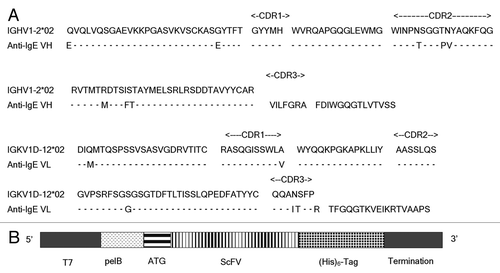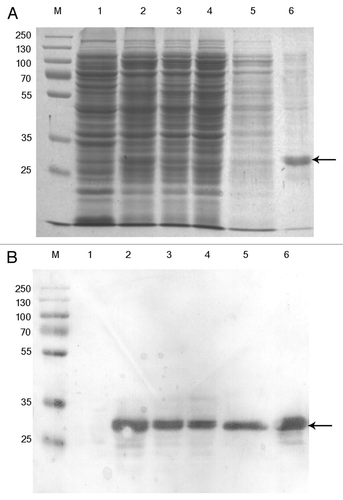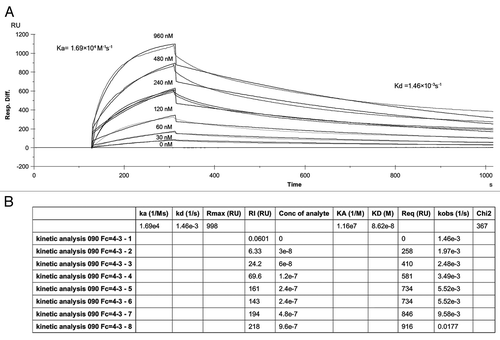Figures & data
Figure 1 (A) DNA and amino acid sequence of the human anti-IgE scFv. IGHV1-2*02 and IGKV1D-12*02 germline sequences are also shown for comparison. Complementarity determining regions (CDRs) are indicated. Residues different to the germline sequences are shown while the identical residues are marked by -. (B) A diagram showing the essential elements of the construct for E. coli expression. T7, T7 promoter; Pel B, the leader sequence; scFv, single-chain antibody fragment. The (His)6-tag and transcription and translation termination region are also indicated.

Figure 2 scFv expression in E. coli. (A) Coomassie blue stain. Lane 1, un-induced total cell (prior to IPTG induction); lane 2, induced total cell (at time of the harvest); Lane 3, periplasmic extract; Lane 4, flow through mixture from Ni-sepharose column; Lane 5, washes; Lane 6, elution from Ni-sepharose column. (B) Western blotting of (A) using anti-His antibody as the probe. The samples are in the same order as in (A). The scFv is indicated by arrows. M, the standard markers (KDa).


